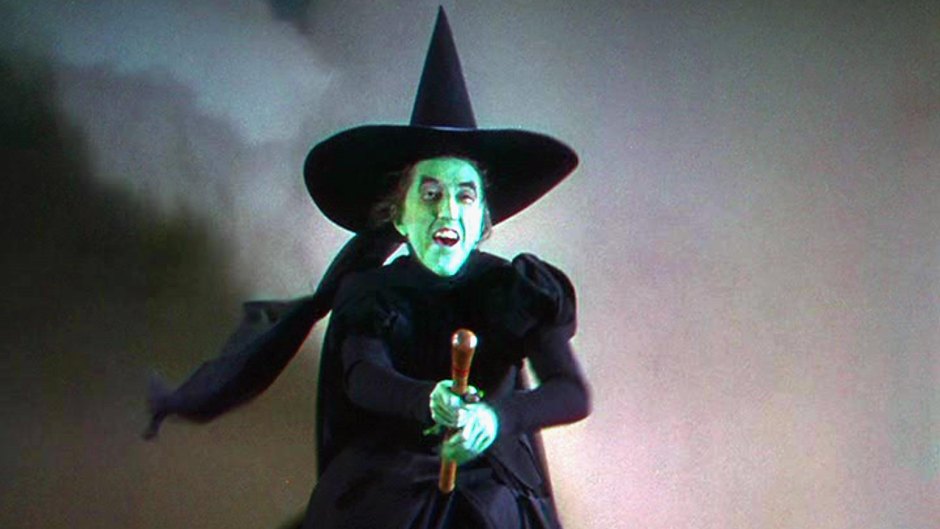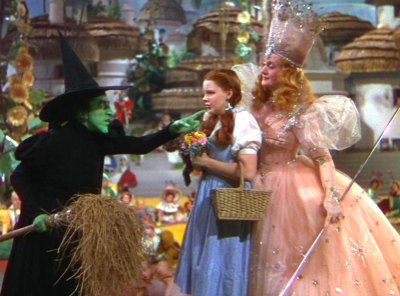
Mgm/Kobal/Shutterstock
Margaret Hamilton Overcame Injuries on ‘Wizard of Oz’ Set: ‘It Would Have Scarred Her for Life’
In The Wizard of Oz, Kansas farm girl Dorothy Gale is asked: “Are you a good witch or a bad witch?” For generations of children, Glinda the Good, as played by Billie Burke, and the Wicked Witch of the West, portrayed by Margaret Hamilton, embodied the warm light and terrifying darkness at the heart of the much-loved film.
Of course, neither Billie nor Margaret had any idea that their performances would go down in history. “It’s not a particularly difficult role,” said Margaret. “You just wring your hands and roll your eyes and rant and rave and shriek a bit.”

Like their characters, Billie, a legendary beauty from a bygone age, and Margaret, a single mom who once taught kindergarten, had very different backgrounds. But they had one big thing in common when they signed on for Oz: They both needed the work!
Billie, the daughter of a circus mime, had been groomed for the stage. Dressed in ruffles and ribbons, she became the darling of Broadway before the First World War when Mark Twain and J.M. Barrie visited backstage and Enrico Caruso, the famed Italian tenor, proposed marriage. “He made love and ate spaghetti with equal skill and no inhibitions,” quipped Billie.
She met Florenz Ziegfeld Jr., the creator of the Ziegfeld Follies, at a New Year’s Eve party in 1913. Billie’s friends warned that the showman had no money, but she eloped with him anyway. “She always said Flo Ziegfeld was the only man she’d ever loved,” Grant Hayter-Menzies, author of Mrs. Ziegfeld: The Public and Private Lives of Billie Burke, tells Closer. Sadly, it wasn’t an easy marriage. “Flo adored Billie, but he was a serial philanderer. He also used her considerable fortune to fund his stage extravaganzas.”
The stock market crash of 1929 further depleted the couple’s resources. When Ziegfeld died in 1932, he left Billie deeply in debt. At 48, the star, who had once rinsed her luminous red hair with French champagne, moved to Hollywood to become a character actress.
Margaret, meanwhile, fell in love with theater as a child, but her father, a prominent Cleveland attorney, insisted that she get a day job. “She taught kindergarten for a number of years but remained active in theater productions,” William Stillman, coauthor of The Road to Oz: The Evolution, Creation, and Legacy of a Motion Picture Masterpiece, tells Closer.
During the 1930s, Margaret worked steadily as a supporting character actress in films. “She was typecast in the ’30s and early ’40s as sort of the New England biddy,” her son, Hamilton Meserve, who was raised by his single mother after his parent’s divorce in 1938, tells Closer. “She was what they called a repertoire actress. She did over 70 films before the war.”
Playing The Wizard of Oz’s Glinda recalled the glamorous roles of Billie’s early career — although it wasn’t as easy. “She was 54 and wore ‘facelifts,’” confides Stillman. “Makeup artist Jack Young glued small pieces of chiffon in front of each ear and pulled them tight with attached string. The strings were concealed under her wig.”
Margaret, meanwhile, arrived at the studio every day at 6 a.m. for makeup sessions lasting nearly three hours. Removing her green makeup after shooting took another hour. “You wanted to get it off quickly because the green makeup contained copper,” says Hamilton. “And copper eats into your skin.”
That was just the start. During shooting, Margaret sustained first-degree burns on her face and second-degree burns on her hand due to a mistimed explosion as she was dropped through a trapdoor out of Munchkinland. Afterward, there was a rush to remove the makeup from her burns. “They were literally clawing at her face because it would have scarred her for life,” says Hamilton, who recalls his mother being bandaged “like a mummy” during her six-week recovery.
Contrary to the popular legend, The Wizard of Oz was not a flop when it opened in August 1939. “Oz was ranked among the top-earning films of the year,” says Stillman, “but because its budget was nearly $3 million, it failed to yield a profit.”
Still, the film was largely forgotten until CBS obtained its television rights in 1956. In the ensuing years, staying up late to watch The Wizard of Oz became a cherished annual event for generations of children.
TV broadcasts brought Billie and Margaret more recognition but didn’t change the trajectory of their already successful careers. By the time Billie passed in 1970 at age 84, she had more than 90 film credits. “The fact that Billie persevered and succeeded in creating a new career at midlife is a considerable triumph,” says Hayter-Menzies.
Hamilton notes that while the popularity of The Wizard of Oz’s telecasts may have helped Margaret, who passed away in 1985 after a 50-year film and theater career, land a few more jobs later in life, it didn’t make his mother any richer. “We would always say that if there were residuals covering The Wizard of Oz,” says Hamilton, “my mother would own the restaurant we were having dinner in.”








































